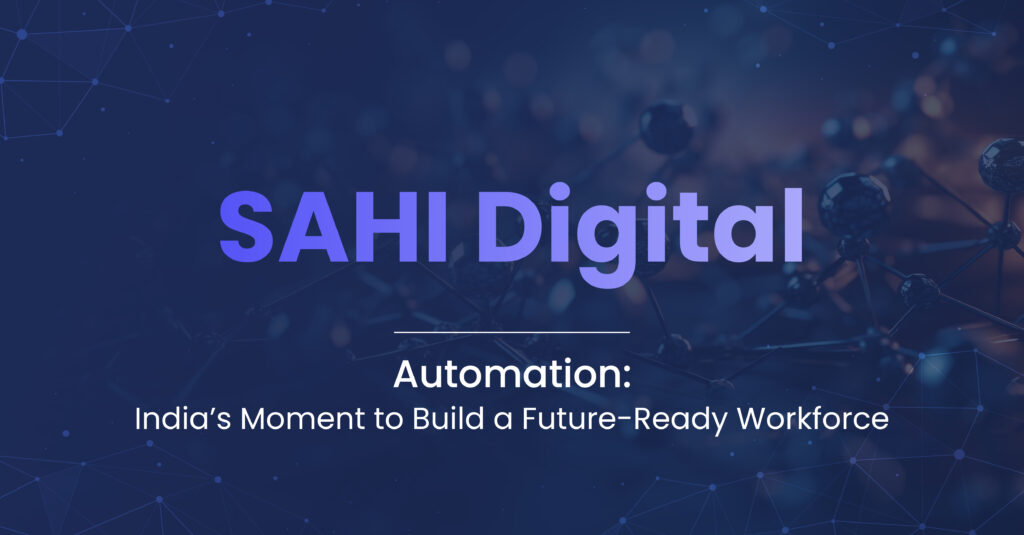Product Head – SAHI Digital
Disruption Is Here—But So Is Opportunity
By 2030, up to 69 million jobs in India could be displaced by automation, says a 2023 McKinsey report. From AI-run warehouses to robotic arms in factories, automation is already reshaping industries like logistics, retail, and manufacturing. But this shift isn’t just about job loss—it’s about transformation.
While roles are being phased out, an estimated 90 million new jobs are also emerging—in green energy, healthcare, digital services, and maintenance. The real question is: can India’s largely informal workforce make that transition?
India’s Workforce: Young, Informal, and Vulnerable
Over 80% of India’s workforce is informal, with many under 35. These are drivers, warehouse workers, delivery agents—often in their first jobs. For them, work is a bridge to formal identity and financial stability. When automation enters their sectors, job loss risks more than just income—it threatens social mobility.
New Roles, New Skills
The jobs replacing old ones aren’t just upgrades—they’re different. A delivery driver won’t simply become a drone pilot. Instead, new roles demand digital know-how, soft skills, and interface familiarity. These are within reach—but not without support.
Enterprises as Enablers
Businesses must go beyond tech adoption and actively support worker transitions. That means redesigning roles, not replacing them. Can a warehouse picker be trained to manage automation systems? Can a field sales agent learn digital CRM? Yes—but only with structured, on-the-job support.
Skilling also needs to evolve. Frontline workers learn best through:
- Mobile-first content
- Peer coaching
- Real-time, on-the-job training
Most already use smartphones and digital tools—what’s missing is a pathway to formal, job-linked upskilling.
SAHI’s Work-Integrated Approach
SAHI helps enterprises do just that. Its model blends skilling with onboarding, housing, and financial inclusion—built around real business needs like compliance and retention. It turns informal workers into consistent, future-ready talent.
But for such models to scale, they must shift from CSR initiatives to core business strategy.
Unlocking India’s Digital Youth Dividend
With 67% of the population under 35 and high smartphone penetration, young Indians are digitally fluent. But their tech familiarity hasn’t translated into employability. Enterprises can close that gap by:
- Using WhatsApp or YouTube for vernacular skilling
- Incentivizing learning with growth opportunities
- Hiring for potential, not just paper degrees
A Future Worth Building
Automation will keep replacing repetitive jobs—but it can also create better, more meaningful work. For enterprises, this means less attrition and stronger workforces. For young workers, it means dignity, inclusion, and a real chance to grow.
India doesn’t have to fear automation. With the right approach, we can lead it.



